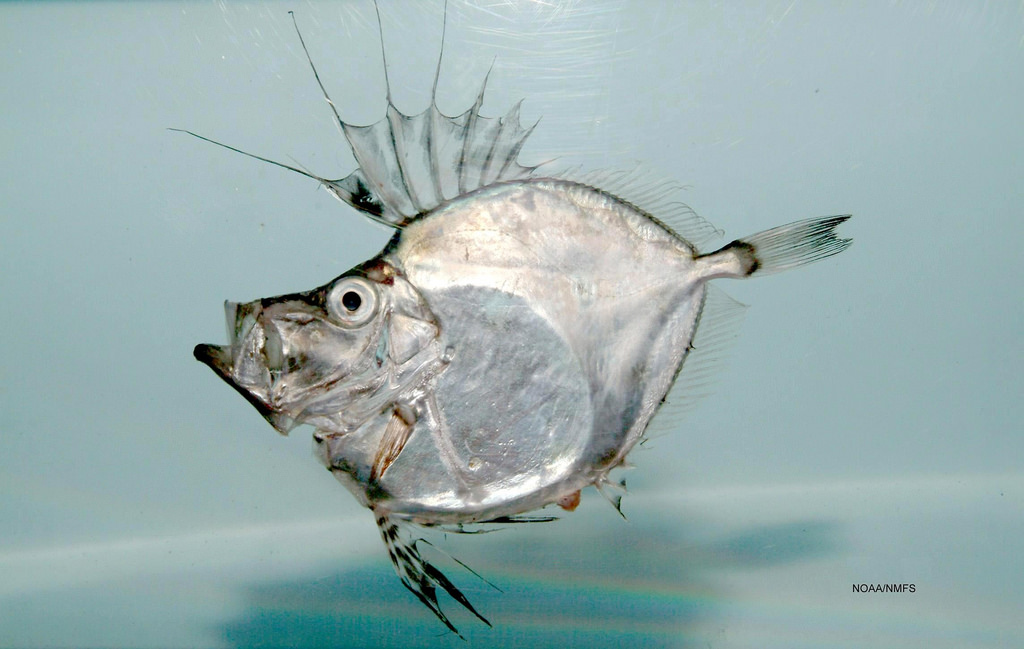
John Dory, Zeus faber, is also called Peter’s Fish or St. Pierre’s Fish, named after the patron saint of fishermen, Saint Peter. Legend is that the dark spot on the fish comes from St. Peter’s thumbprint as he tossed the fish back into the sea.
The John Dory fish is noted in Jules Verne’s An Antarctic Mystery, published in 1897:
Among the denizens of the deep, captured by the crew of the schooner with line and net, I noted more particularly a sort of giant John Dory (dorade) three feet in length, with firm and savoury flesh…The legendary etymology of the piscatorial designation is Janitore, the “door-keeper,” in allusion to St. Peter, who brought a fish, said to be of that species, to our Lord at His command.
Description and Biology
- John Dory reaches 2 feet in length, and about 7 pounds in weight.
- It has sharp, small scales, with a silver belly and a color that ranges from olive gray green to a yellowish color.
- The body is flat and thin, with a round to slightly oval shape. The eyes are near the top of its head.
- It has a large circular dark spot on the side meant to scare predators.
- John Dory feed on other fish.
Range and Habitat
- John Dory ranges from the North Atlantic to the Mediterranean, New Zealand, and Australia. It is a managed fish species in New Zealand.
- It is found in coastal areas, living at or near the seabed.
- John Dory is usually solitary.
Market Forms
- The fish is very flavorful with a sweet flavor.
- It has a low oil content with a medium flake texture, making poaching, baking, or sauteing good cooking methods. Just take care to not overcook.
- The flesh is translucent, but turns white when it is cooked.
- John Dory can be purchased whole or as fillets with skin on or off.
Image of John Dory, courtesy NOAA Photo Library.
